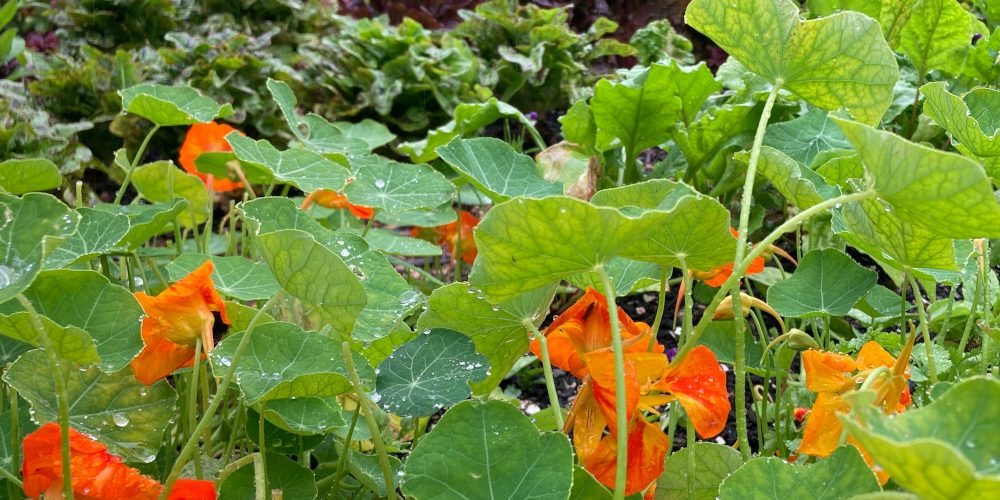In this article, we look at what brings more balance into a kitchen garden, in terms of growing a range of plants that will be good both for your plot and for your cooking. None of this is rocket science, but we do find sometimes that growers can find their kitchen gardens a little limited because they haven’t considered what they want to grow.
Balance in your Plot
It is a fairly normal aspiration to want our veg gardens to look neat and tidy, weed-free, with veg plants growing in rows or blocks, perhaps with some flower borders and a fruit cage and maybe some pots of herbs or a dedicated herb patch. There are no hard and fast rules for getting balance, and if your plot is small you may find it isn’t relevant anyway. For a bigger plot, you might find you are encouraged by other growers to make sure you rotate your crops, or perhaps will be advised to do x, y and z to make sure your beans grow well. Our approach is a little more relaxed – mixing things up somewhat will help attract a mix of different bugs and bees and butterflies and birds:
A degree of higgledy-piggledy is good
Neat rows are helpful, growing in blocks is helpful, weed-free is preferable, but a degree of higgledy-piggledy is to be encouraged as well. Add some companion flowers like marigolds and tagetes in between rows, try growing leeks and carrots in alternate rows, pop basil in between tomato plants. Dot a few pots around too, with flowers or herbs. Have a small patch of beetroot at one end of the plot, and a few more growing in another area. It all helps.
Add lots of herbs and flowers
This is so beneficial to your plot – you’ll notice within a season or two how you see different butterflies and insects etc, simply by planting lots of different flowering herbs like mint, chives, basil and marjoram, some native wildflowers (our wildflower plug plants are a good place to start) and plenty of companions like calendula, nasturtium and other flowers (many of which are good for cutting)
Balance for the Kitchen
It’s quite easy to get carried away with what you want to grow. A lot of people end up growing all the bean varieties they possibly can, and then are totally awash with beans and little else.
Mix up your veggies
If you have a small plot, you may wish to grow a few leaves, a few roots, some leeks and some tomatoes, for example, rather than only salad leaves. They will all crop at different times and it’ll help to keep your mealtimes a little more interesting. Think about how you enjoy eating – if you lean heavily towards roasts and comfort food in autumn, you may want to grow a few more roots and squashes. Most gardeners will want to balance out brassica flavours (cabbage, kale, broccoli etc) with other things, like beetroot, carrots and fennel.
Grow herbs
Herbs are such a great way of adding flavour to meals – choose a few different ones. Mint is great for pots, parsley is a winner for most gardens, basil is great grown indoors. Think about the different flavours and what you like to eat – if you eat meat you may want to grow plenty of rosemary, thyme and mint, or if you tend more towards chicken and fish you may wish to grow dill, tarragon and parsley. If you eat a lot of salads, then herbs that you can enjoy in salads are a good idea, like parsley, chervil. You get the gist!
Don’t forget fruit
A lot of growers shy away from fruit, but even just a few strawberry plants or raspberry canes can produce a good enough crop to fill a few bowls here and there over the summer months, and it is great to be able to harvest both fruit and veggies.

